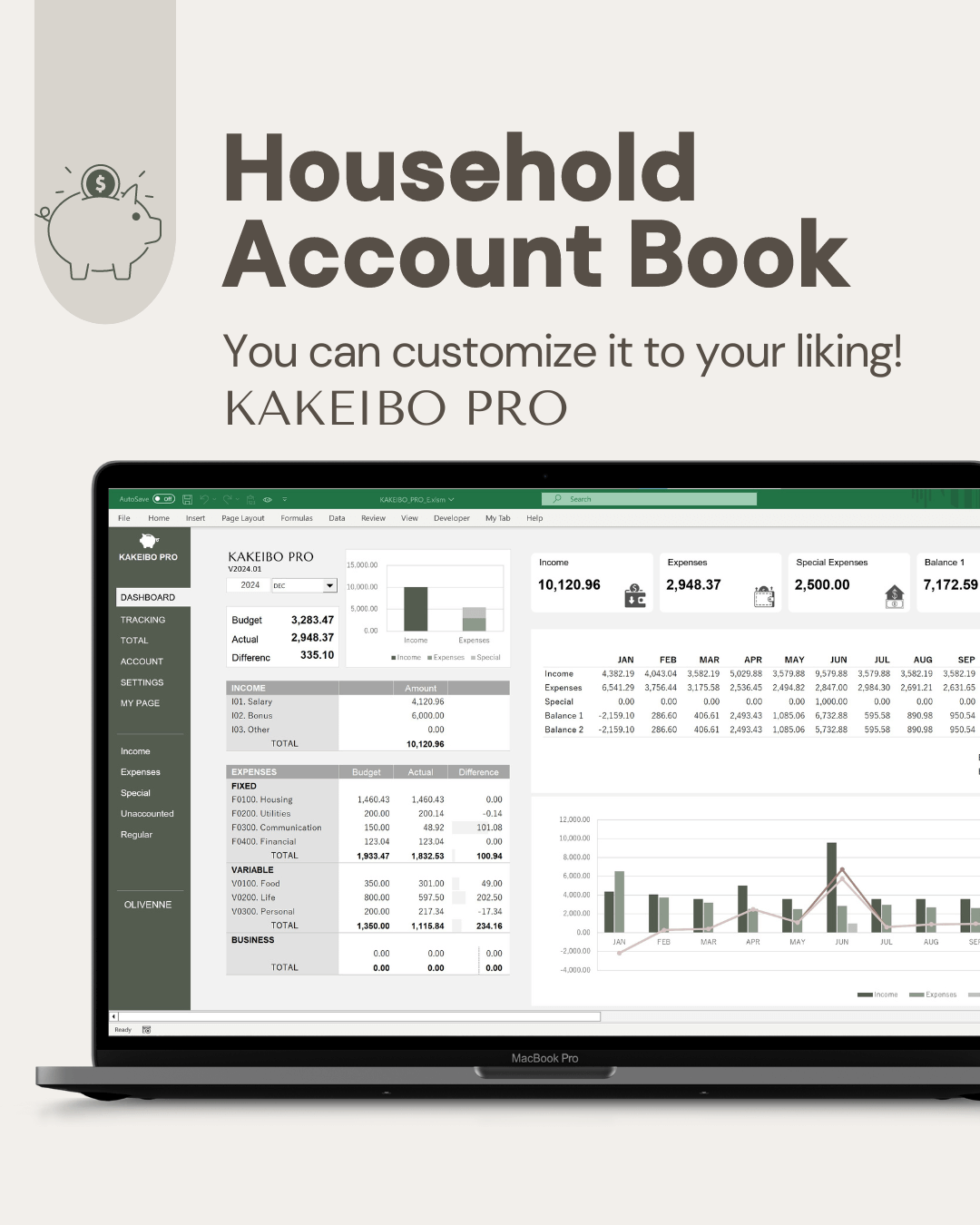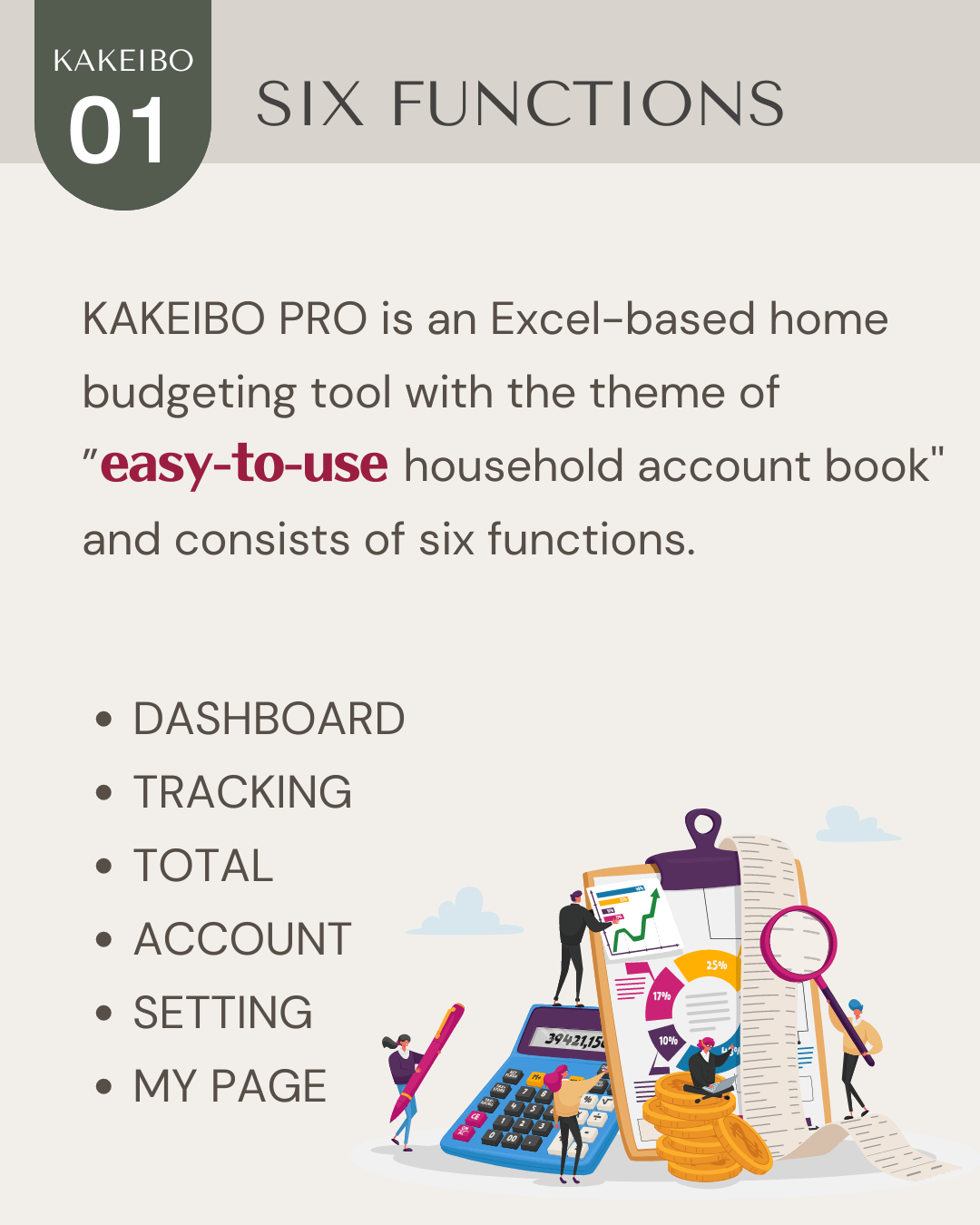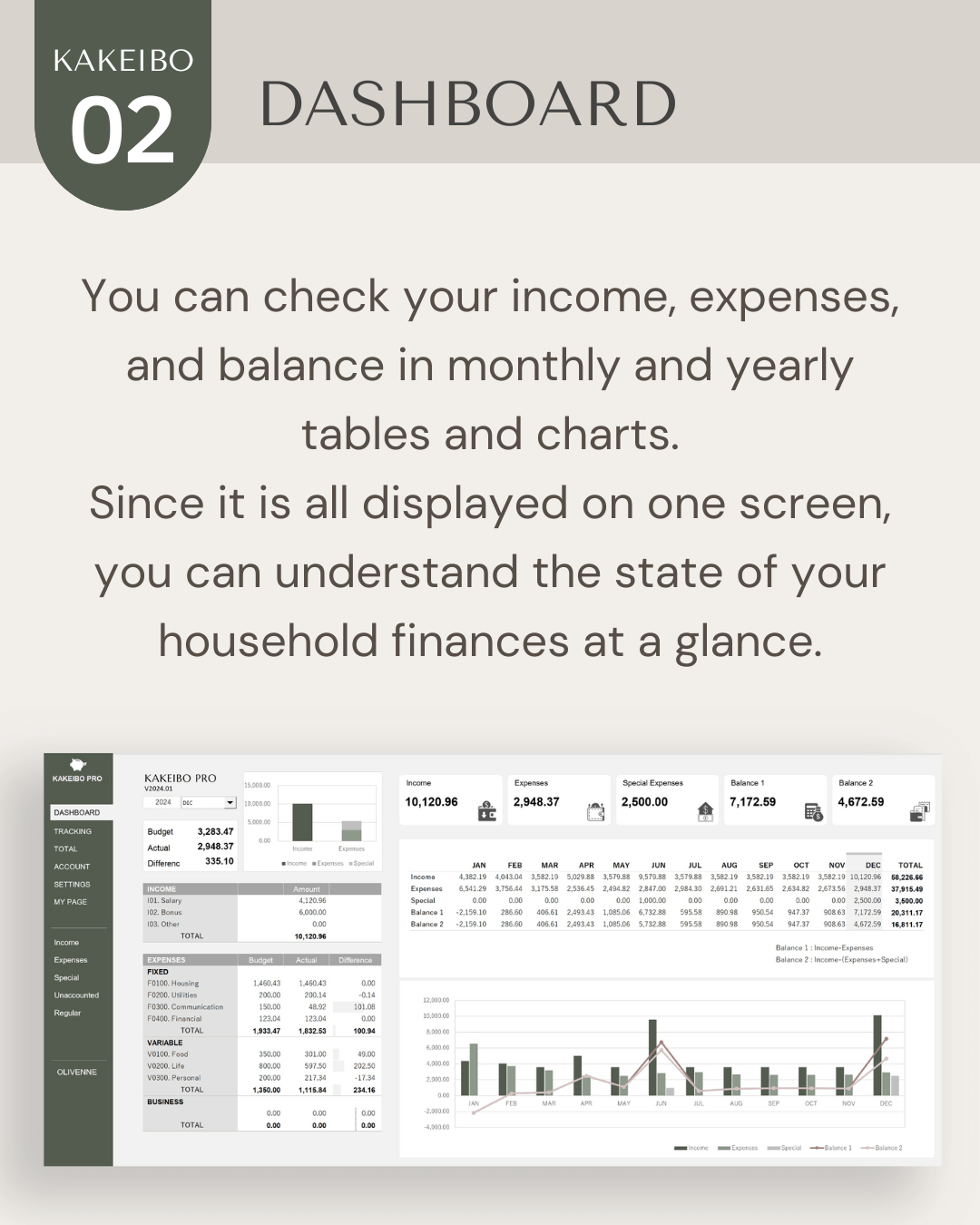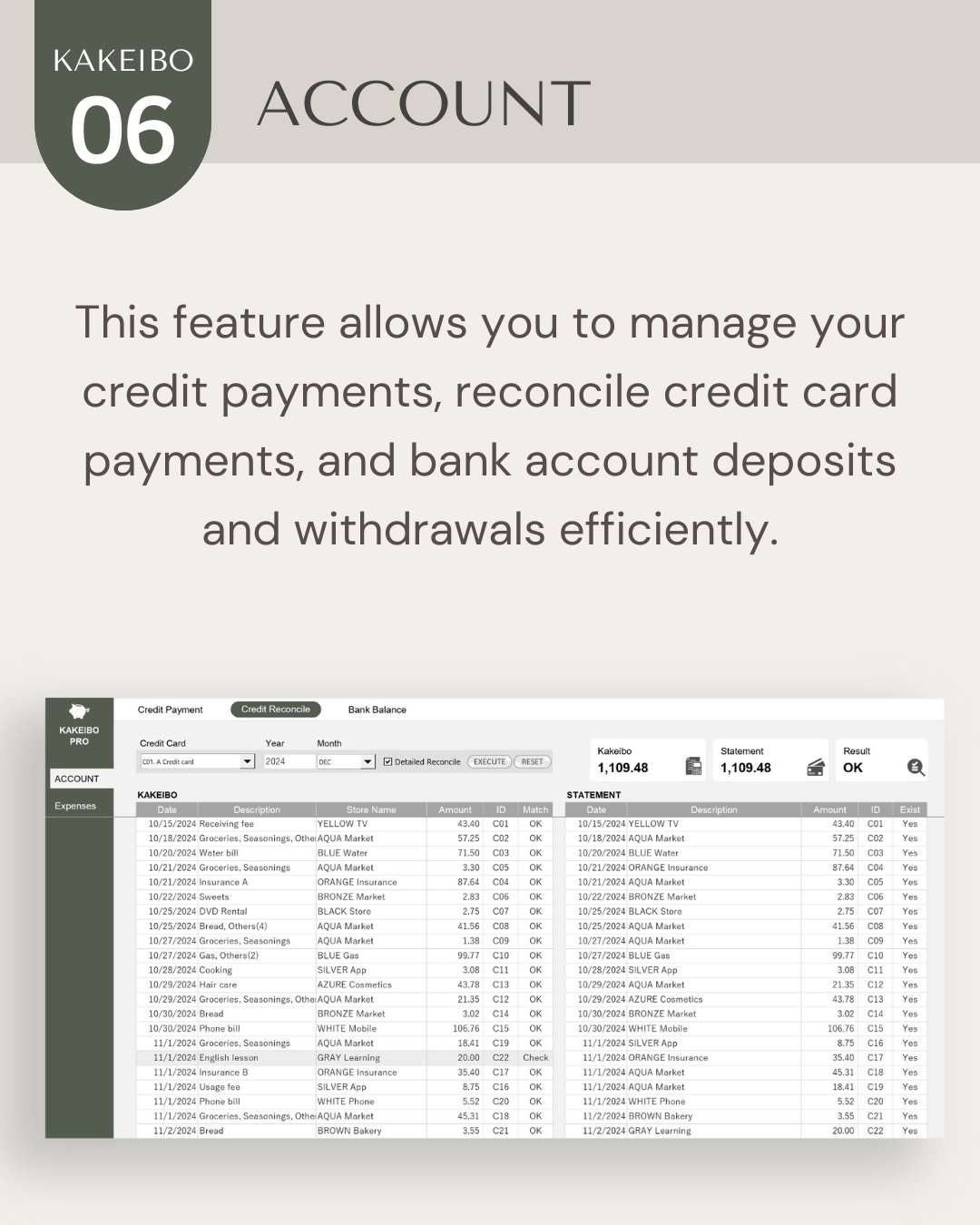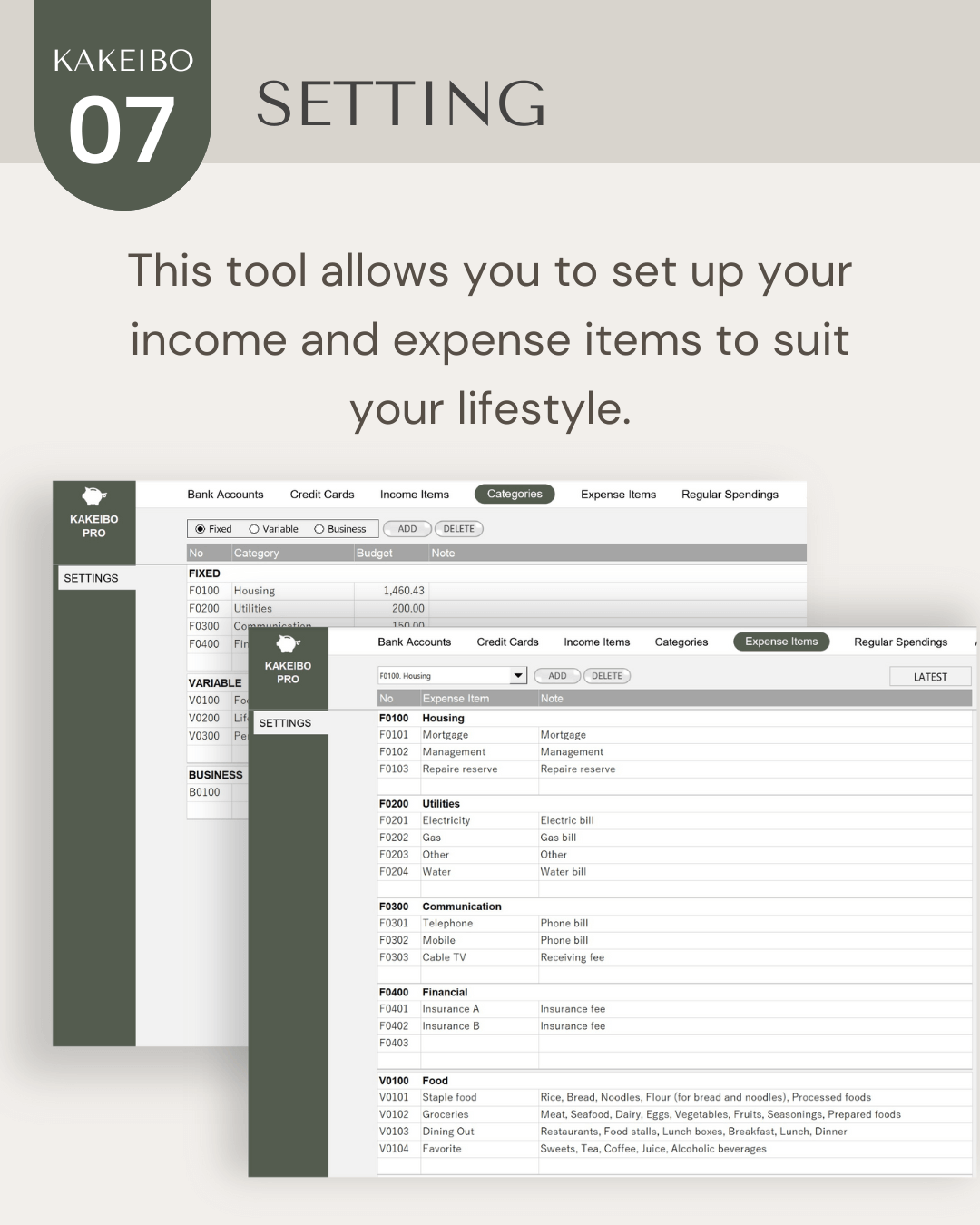Have you ever wondered, like “Which category should I put this purchase into?” Keeping a household account book is said to help you keep track of your money flow and save money. In order to accurately record your expenses in a household account book, it is essential to sort them into the appropriate categories.
However, it is often difficult to know which category to classify your expenses under. That is why I have created a large list of household expense items! Here is a categorized list of various everyday items. Let’s start managing your household budget effectively by eliminating all your worries about expense categorization at once!
Language: English Japanese
–
1. Category
I have listed various daily expenses and categorized them based on Japanese standards; there might be different items in your country.
1-1. Housing
Housing refers to the costs associated with housing, such as monthly rent and mortgage. Housing expenses account for significant percentage of the household budget. Specifically, it includes the following items.
Items: Mortgage/Rent, Management fees, Reserve for repairs, Facility repairs and Maintenance
1-2. Utilities
Utilities refers to the costs paid to use public services, such as water, electricity, and gas. These expenses are essential for comfortable living in your house and important to record them carefully as expenses in your household budget. By keeping track of your utility expenses, you can reduce wasteful use and take steps to save money.
Items: Water bill, Electricity, Gas, Fuel
1-3. Communication
Communication refers to the costs of the use of communication services. Specifically, it includes the following items. This is an essential expense item in modern life and one of important expenses in the household budget.
| Telephone | Fees for phones, mobiles, and smartphones |
| Subscription fees | NHK subscription fees, Cable TV subscription fees |
| Internet | Internet connection fees |
| Shipping | Postage, Freight, Postcards, Stamps |
1-4. Social insurance and Taxes
The term Social insurance and Taxes refers to the costs related to social insurance premiums and various taxes. Specifically, it includes the following items. These expenses are fees paid by individuals and households to support the social security system and government finances. Understanding and budgeting for these expenses is important for your finances.
| Social insurance | Health insurance, Employees’ pension insurance, Unemployment insurance, National pension insurance, Long-term care insurance |
| Tax | National tax: Income tax, Inheritance tax, Consumption tax, etc. Local tax: Inhabitant tax, Fixed asset tax, Automobile tax, etc. |
1-5. Finance
Finance refers to the costs associated with financial services and products such as fees, charges, and interest. Specifically, it includes the following items.
| Insurance | Premiums for Life/Medical/Cancer insurance, Fire/Earthquake insurance, Student insurance, Automobile insurance |
| Investment | Purchase of Investment trusts and Pension funds, Stocks, and Bonds |
| Saving | Savings, Time deposits, Foreign currency deposits |
1-6. Education
Education refers to the various costs associated with education, such as tuition, books, and supplies. Specifically, it includes the following items. Education expenses are vital components of the household budget and are crucial for children’s growth and future educational opportunities.
| Tuition | School tuition, Fees for cram school and remedial classes |
| Study abroad and college | Study abroad and college preparation fees |
| Books | Books, School supplies |
| Other | Expenses for school events and school festivals, School trips, Participation in education-related events |
1-7. Food
Food refers to the costs of food, such as groceries, dining out, and beverages. Specifically, it includes the following items. Keeping track of food expenses is crucial in the household budget, as they are essential for daily sustenance. By managing your food expenses, you can keep your budget in check while maintaining a healthy diet.
| Staple food | Rice | White rice, Brown rice, Glutinous rice |
| Breads | Breads, Scones, Sandwiches | |
| Noodles | Udon, Soba, Pasta, Chinese noodles, Cup noodles | |
| Other | Millet, Wheat, Rice cakes, Cereals | |
| Groceries | Vegetables | Fresh vegetables |
| Seaweed: Wakame, Kelp, Mekabu, Hijiki, Seaweed | ||
| Dried foods: Beans, Dried shiitake mushrooms, Bean-starch vermicelli, Sesame, Furikake, Tea leaves | ||
| Processed soybean products: Natto, Tofu, Abura-age, Ganmodoki | ||
| Processed vegetable products: Konnyaku, Pickled plums, Pickles, Tsukudani | ||
| Fruits | Fresh fruits | |
| Nuts: Almonds, Cashews, Walnuts, Peanuts, Chestnuts, Ginkgo nuts | ||
| Processed fruits: Dried fruits, Canned fruits, Jellies, Jams | ||
| Meats | Fresh meats | |
| Processed meats: Ham, Sausage, Bacon | ||
| Fish | Fresh Fish | |
| Shellfish | ||
| Salted and dried seafood: Cod roe, Dried young sardines, Dried horse mackerels | ||
| Fish paste products: Kamaboko, Chikuwa | ||
| Processed seafood products: Dried bonito flakes, Pickles, Tsukudani, Canned seafood | ||
| Dairy products | Eggs, Milk, Cheese, Yogurt, Butter, Margarine | |
| Flour | Wheat flour, Rice flour, Potato starch, Breadcrumbs | |
| Prepared foods | Staple | Bento, Sushi, Rice balls, Porridge, Pizza |
| Side dishes | Prepared foods, Frozen foods, Retort pouch foods | |
| Seasonings | Fats and oils | Cooking oil, Sesame oil, Olive oil |
| Seasonings | Sugar, Salt, Soy sauce, Vinegar, Miso, Sauce, Ketchup, Mayonnaise, Dressing | |
| Beverages | Teas | Green tea, Black tea, Oolong tea, Barley tea, Herbal tea |
| Coffee | Coffee, Cocoa, Café au lait | |
| Juices | Fruit and vegetable juices | |
| Alcohol | Beer, Wine, whiskey, Sake, Shochu | |
| Other | Carbonated drinks, Dairy drinks, Mineral water, Sports drinks | |
| Confectionery | Western sweets, Japanese sweets, Rice crackers, Snacks, Delicacies, Confectionery ingredients | |
| Eating out | Breakfast, Lunch, Dinner, Café |
1-8. Durable consumer goods
The term Durable consumer goods refers to the costs of consumer goods intended for long-term use, such as appliances, furniture, and electronics. Specifically, it includes the following items. Once purchased, these items are used for a long period of time and are not frequently replaced like other consumer goods. The purchase of consumer durables requires a certain budget and is considered a significant expense in the household budget.
| Furniture | Tables, Sofas, Chairs, Storage |
| Appliances | Microwave ovens, Refrigerators, Washing machines, Vacuum cleaners, Air conditioners, Televisions, Computers, Cameras |
| Bedding | Deds, Futons, Blankets |
| Decoration | Light fixtures, Curtains, Rugs, Paintings |
| Kitchenware | Cooking utensils, Plates, Pots, Pans |
1-9. General goods
The term General goods refers to the costs of small purchases of miscellaneous items necessary for daily living, such as household goods, living goods, and stationeries. Specifically, it includes the following items. These expenses are essential for daily living and completing household chores.
| Household goods | Buckets, Brushes, Brooms, Hangers, Ironing boards |
| Living goods | Storage goods, Slippers, Towels, Mats, Umbrellas, Packing materials |
| Stationery | Notebooks, Organizers, Writing utensils, Paper products, Scissors, Glue, Cellophane tape |
| Other | Handicrafts, Travel accessories, Seals, Disaster prevention and security goods |
1-10. Daily necessities
The term Daily necessities refers to consumable items used in daily life, such as detergents, hygiene products, and cleaning supplies, as well as supplies needed for household chores. Specifically, it includes the following items. Understanding your spending on daily necessities allows you to plan purchases and manage your budget effectively.
| Detergents | Kitchen detergent, Laundry and Fabric softener, Bleach, Cleaners |
| Hygiene products | Paper products, Sanitary products, Baby products, Masks |
| Household items | Plastic wrap, Aluminum foil, Storage bags, Garbage bags, Household utensils |
| Chemical products | Insecticides, Insect repellents, Dehumidifiers, Deodorizers, Air fresheners |
| Other | Dry cell batteries, Candles, Incense, Matches, Lighters |
1-11. Beauty
Beauty is the costs of goods and services related to beauty and health, such as skincare products, salon services, and healthcare expenses. Specifically, it includes the following items. These expenses are essential for those interested in self-care and beauty, and can quickly escalate if not properly budgeted for.
| Skin care | Cleanser, Cleansing, Toner, Essence, Cream, UV protection |
| Body care | Body and hand creams, Soaps, Bath salts, Razors, Hair removal |
| Hair care | Shampoos, Treatments, Hair styling products |
| Oral care | Toothpaste, Toothbrush, Mouthwash |
| Nail care | Manicure, Nail gel, Remover, Nail tools |
| Cosmetics | Foundation, Primer, Lipstick, Lip balm, Mascara, Makeup accessories |
| Perfume | Perfume, Aroma |
| Salon | Beauty salon, Esthetic salon, Nail salon, Massage |
1-12. Clothing
Clothing refers to the costs of clothing and accessories, such as apparel, footwear, and accessories. Specifically, it includes the following items. Understanding clothing expenses enables you to effectively manage your clothing and fashion budget.
| Clothing | Tops, Pants, Skirts, Coats, Jackets, Suits, Socks, Tights |
| Underwear | Underwear, Pajamas, Innerwear |
| Accessories | Wallets, Hats, Sunglasses, Scarves, Belts, Gloves, Handkerchiefs |
| Bags | Bags, Suitcases |
| Shoes | Pumps, Business shoes, Boots, Sneakers, Sandals |
| Jewelry | Necklaces, Rings, Earrings, Bracelets, Accessories |
| Watches | Watches, Accessories for watch |
1-13. Transportation
Transportation refers to the costs associated with travel and commuting to and from work, school, or other destinations. Specifically, it includes the following items. These expenses are incurred during various types of trips, including commuting to work, school, shopping, leisure activities, and travel. This category is crucial for comprehending and budgeting daily transportation costs.
| Transportation | Train, Bus, Airfare, Cab, Commuter pass |
| Automobile | Gasoline, Parking lot rent, Vehicle inspection, Maintenance |
1-14. Medical
Medical refers to the costs of medical services and medical-related products, such as prescriptions, medical equipment, and over-the-counter medications. Specifically, it includes the following items. Understanding medical expenses is crucial for visualizing healthcare expenditures and effectively managing the budget.
| Medical consultation fee | Medical and dental care, Surgery, Hospitalization, Treatment, Medical checkups |
| Pharmaceuticals | Medicines, Herbal medicines, Trauma and skin disease medicines, Nutritional supplements, Sanitary and medical products |
| Health care products | Eyeglasses, Contact lenses, Physical measuring instruments, Nursing care products |
1-15. Entertainment
Entertainment refers to the costs for knowledge acquisition, hobbies, and recreational activities, such as books, movies, sports, and events. Specifically, it includes the following items. Understanding your entertainment expenses enables you to effectively budget for hobbies and leisure activities.
| Books | Newspapers, Magazines, Books |
| Movies and music | Musical instruments, CDs, DVDs, Concerts, Live performances, Watching movies |
| Sports | Sporting goods, Gym, Sports games |
| Toys | Game consoles, Game software, Toys |
| Pets | Pet food, Pet supplies, Vaccines, Trimming, Veterinary fees |
| Hobbies | Travel, Craft supplies, Gardening supplies, Plants, Flowers, Apps, Learning |
1-16. Social
Social refers to the costs incurred for socializing and social activities with friends and acquaintances, such as dining out, attending events, and hosting gatherings. Specifically, it includes the following items. Understanding the costs enables you to effectively budget for social activities.
Items: Weddings, Funerals, Meals at restaurants, Drinks at cafes, Event participation fees, Gifts, Presents, and Souvenirs
1-17. Service
Service refers to the costs paid for the use of a variety of services. Specifically, it includes the following items. Utilizing services can enhance the convenience of your life. Understanding service expenditures is crucial for budget management.
Items: Cleaning, Rental, Maintenance, Repair, Housekeeping, Care services, Animal services (e.g., pet hotels and pet sitters)
–
2. Summary
When keeping a household budget, it is often difficult to decide which expense category to assign purchases to. Therefore, I have listed various daily expenses and categorized them. Categorizing items is key to keeping a household account book for a long time.
Establishing your own criteria for keeping a household budget will make it easier to assign purchases to which expense categories. The items needed in a household account book vary from person to person, and choosing the items that fit your lifestyle will make it easier to use. I hope this article will be helpful as you consider which items are necessary for you and how to categorize them.
–
